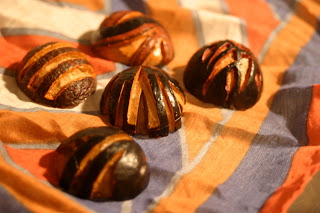David Hilliard's photos tell a story using a succession of photographs (triptych) taken of the same scene and placed together. His subjects are usually his personal friends and loved ones, and he focuses on daily life.
Ellen von Unwerth uses women as her subjects and creates gritty, sexualized photographs. Her work has been described as erotic femininity. She worked as a fashion model for ten years before creating fashion and editorial work from the other side of the camera. She's worked with numerous musical artists in their promotional stuff, and she also does short films.
Harry Callahan, doing most of his work in the mid 20th century, has a very minimalistic style. His technique was simple : go out everyday to the places he always goes and take lots of pictures. His photographs isolated the subject so as to focus on the intricacies of that form itself. His wife was the subject of his photos quite often.
Horst P. Horst was a German fashion photographer. His meeting of dancer Evan Weidemann aroused his interest in avante-garde art. He began photographing for Vogue in 1931, and also met Coco Chanel whom he called "the queen of the whole thing" and photographer her art for three decades. After applying for citizenship, he became a part of the army and photographed the army. He focused on careful lighting and surreal setups.
Irving Penn is also known for his portraiture and fashion photography. Irving Penn studied under Alexy Brodovitch at the Philadelphia Museum School of Industrial Art (now the University of the Arts) from which he was graduated in 1938. Penn's drawings were published by Harper's Bazaar and he also painted. As his career in photography blossomed, he became known for post World War II feminine chic and glamour photography.
He photographed still life objects and found objects in unusual arrangements with great detail and clarity. His subjects varied widely, but his prints are always clean and krispy. His work was often not appreciated until after its time.
"Sensitive people faced with the prospect of a camera portrait put on a face they think is one they would like to show the world... Very often what lies behind the facade is rare and more wonderful than the subject knows or dares to believe." – Irving Penn
William Eggleston has a unique ability to find beauty, and striking displays of color, in ordinary scenes. A dog trotting toward the camera; a Moose lodge; a woman standing by a rural road; a row of country mailboxes; a convenience store; the lobby of a Krystal fast-food restaurant—all of these ordinary scenes take on new significancein the rich colors of Eggleston's photographs. Eudora Welty suggests that Eggleston sees the complexity and beauty of the mundane world: "The extraordinary, compelling, honest, beautiful and unsparing photographs all have to do with the quality of our lives in the ongoing world: they succeed in showing us the grain of the present, like the cross-section of a tree.... They focus on the mundane world. But no subject is fuller of implications than the mundane world!" Mark Holborn, in his introduction to Ancient and Modern writes about the dark undercurrent of these mundane scenes as viewed through Eggleston's lens: "[Eggleston's] subjects are, on the surface, the ordinary inhabitants and environs of suburban Memphis and Mississippi--friends, family, barbecues, back yards, a tricycle and the clutter of the mundane. The normality of these subjects is deceptive, for behind the images there is a sense of lurking danger." American artist Edward Ruscha said of Eggleston's work, "When you see a picture he’s taken, you’re stepping into some kind of jagged world that seems like Eggleston World.”






















































